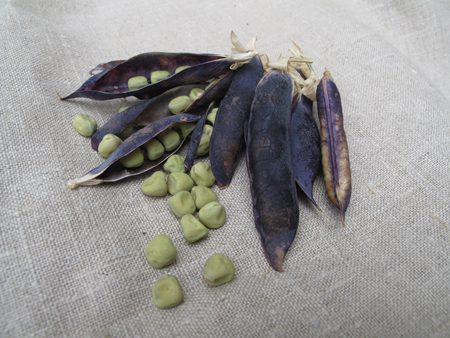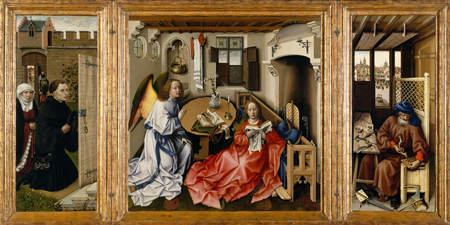Friday, September 27, 2013

Beautiful Blue Pod Capucijner (Pisum sativum arvense, var. ‘Blue Pod Capucjiner’) seedpods and seeds. All photographs by the author
How many of you gardeners out there take the time to save your garden seed? The allure of planting seeds in the spring is easy to understand, but do you linger over drying seedpods later in the season, waiting to harvest next year’s generation? Seed saving may seem like an onerous counterpart to seed sowing, but the task is endlessly rewarding. It’s not just about securing a free source of new plants for the following year or two; there are other benefits to reap, so to speak. By selecting seed from among the garden’s most healthy specimens you promote added vigor in subsequent generations of plants. You get to witness the often overlooked beauty of a plant engaged in seed production. And, really, is there anything more satisfying than sowing the seed you collected from your own garden? For the seed-saving gardener, it doesn???t get much better than that.
Read more »
Tags: Blue Pod Capucijner, castor bean, corn poppy, Datura, Datura metel, Glaucium flavum, henbane, horned poppy, Mandragora officinarum, mandrake, Ricinus, sea poppy, seed, seedhead, seedpod, seeds, stavesacre
Posted in Botany for Gardeners, Gardening at The Cloisters | Comments (3)
Thursday, February 10, 2011

Robert Campin and Workshop (South Netherlandish, Tournai, ca. 1375???1444). Triptych with the Annunciation, known as the “Merode Altarpiece,” ca. 1427???32. Made in Tournai, South Netherlands. Oil on oak. The Metropolitan Museum of Art, New York, The Cloisters Collection, 1956 (56.70a???c). See Google Art Project for an in-depth look at this work.
A great many things have changed during the twenty years that I’ve been working at The Cloisters, but its special atmosphere remains constant. One of the most unique aspects of the Museum is the way in which the gardens are integrated into the collection. From the Museum’s inception, the curators envisioned the artwork and gardens as a whole, where the plants were not merely aesthetic elements, but also of great educational value. Many of the galleries either open directly onto or provide views into one of the three interior gardens (see floor plan). This arrangement encourages visitors to experience the gardens as part of medieval culture, to make connections between the plants and the objects, and to understand both within the historical context presented in the galleries. Read more »
Tags: Antonites, Bellis perennis, Claviceps purpurea, corn poppy, Cuxa Garden, English daisy, ergotism, fungus, Galen, grain, hermit, ignis sacer, Isenheim, mandrake, Matthias Gr??newald, monasticism, Niclaus of Haguenau, plantain, poppy, sage, Saint Anthony Abbott, Saint Anthony's Fire, Saint Vinage, Tau cross, verbena
Posted in Gardening at The Cloisters, Plants in Medieval Art | Comments (1)


